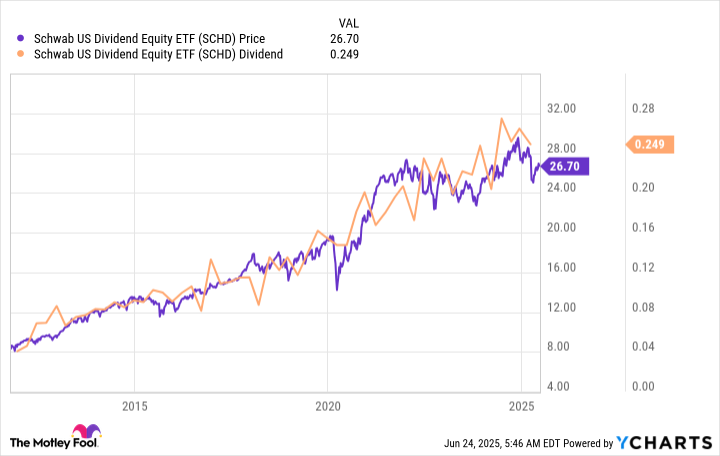Without accurate data collection, next year’s COLA could miss the mark for retirees.
One of the most important features of Social Secuirty is the annual cost-of-living adjustment. The program is designed to ensure the pension paid out to tens of millions of seniors each month keeps up with the rising costs of goods and services.
Even with the annual bump in benefits, seniors are still finding it hard to keep up with higher prices at the doctor’s office or the grocery store. The purchasing power of seniors’ benefits has declined by 20% since 2010, according to a study from The Senior Citizens League. That’s largely due to a discrepancy between how the government measures inflation and how seniors experience inflation in real life.
And the challenge may have just gotten worse due to cutbacks at the Bureau of Labor Statistics (BLS), the department in charge of collecting Consumer Price Index (CPI) survey data, from the Trump administration. That could result in a 2026 COLA that doesn’t accurately reflect the true increase in the cost of living for seniors, further weakening the purchasing power of that monthly Social Security deposit.

Image source: Getty Images.
How does the government calculate the annual COLA?
Before we dive into the challenges facing the BLS, it’s important to understand how the government calculates the Social Security COLA.
The COLA is based on a measure of inflation known as the Consumer Price Index for Urban Wage Earners and Clerical Workers, or CPI-W. The BLS collects prices for a theoretical basket of over 200 goods and services from thousands of locations around the country every month. The CPI-W is then calculated based on the changes in those prices each weighted according to their weight in the basket of goods.
For example, if the price of food or housing increased by 1% over the last month’s survey data, it would have a substantial impact on the ultimate CPI-W number. On the other hand, if the price of clothing increased by 1%, it would have a much smaller impact, since it represents a smaller portion of the average person’s budget.
The government calculates the COLA by taking the average year-over-year increase in the CPI-W during the third quarter of the year. That number becomes the COLA for the next year.
That means the accuracy of the data is particularly important because that’s a relatively short window to determine how prices are impacting seniors’ budgets and how much more they’ll need to get by over the next year.
The big problem facing next year’s COLA
Unfortunately for seniors relying on the COLA, this year’s third-quarter CPI numbers might not be as accurate as they could be. That’s because cutbacks in the BLS have led the bureau to reduce the number of survey points for the Consumer Price Index.
In an internal report shared with The Wall Street Journal, government officials said: “The CPI temporarily reduced the number of outlets and quotes it attempted to collect due to a staffing shortage in certain CPI cities. These procedures will be kept in place until the hiring freeze is lifted, and additional staff can be hired and trained.”
In the meantime, it’s relying on less effective estimation methods to figure out how much prices increased in any given month. Nearly 30% of all the data points in the CPI came from estimates. Prior to April, that number was consistently 10% or less.
Over the long run, the team at the BLS will probably do a pretty good job of estimating the changes in prices for the CPI. However, as mentioned, the COLA is based on a relatively small window. And it’s very likely there will be some inaccuracies in the data used to compile the CPI.
If the BLS underestimates inflation, it means next year’s COLA will come in below where it should. As a result, seniors could experience a further deterioration in the purchasing power of their Social Security checks.
What will the 2026 COLA be?
Both The Senior Citizens League and independent analyst Mary Johnson currently estimate the 2026 COLA will come in at 2.5%. That’s right in line with last year’s COLA as well as its historical average.
But several factors could cause that number to climb higher over the next few months. Not only is the BLS struggling to collect accurate data (which could swing the COLA either higher or lower), but the Trump administration has imposed tariffs on most imports. The tariffs are paid by businesses importing goods, which typically leads to higher prices for consumers.
Those tariffs could lead to a higher COLA next year, but that’s not necessarily good for seniors. The COLA calculation is most effective when there’s slow and steady inflation. Sudden spikes in inflation — like those caused by tariffs or even by inaccurate data — can lead to diversions between the calculated COLA and the actual price changes experienced by seniors. As a result, 2026 could be a challenging year for those heavily reliant on Social Security.







